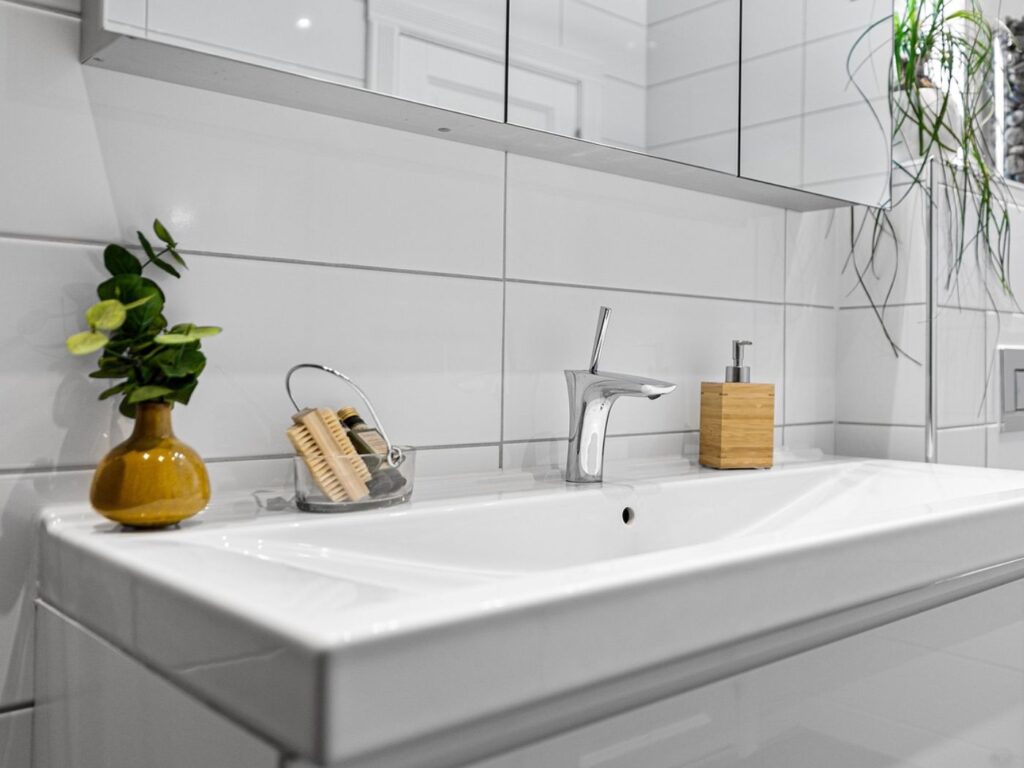Struggling with excess moisture in your bathroom? You’re not alone. Many homeowners grapple with this issue, often leading to unwelcome mold and mildew. But what if the solution could be as simple as adding some greenery to your space?
Yes, you read that right. Certain plants are not just decorative but also functional, absorbing moisture and purifying the air. So, let’s delve into the world of bathroom-friendly flora, the unsung heroes that could transform your space into a healthy, humidity-free haven.
The Best Types of Plants for Moisture Absorption
If you’re combating unwanted humidity in your bathroom, look no further. A number of plants are equipped with the ability to sponge up extra moisture. Now, let’s dive into each one of them.
Peace Lily: Ideal for High Humidity
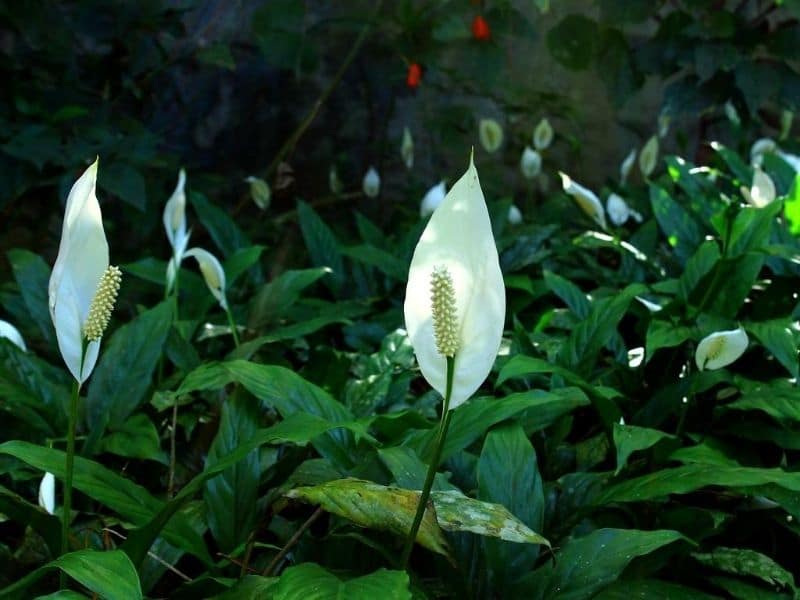
Can’t get rid of that sticky feeling in your bathroom? The Peace Lily may well be the perfect choice for you. This plant thrives in high-humidity environments, leaving you with a lesser amount of moisture to worry about.
Besides, it’s an eye-pleaser with its sleek, dark green leaves and delicate white blooms. Periodically check on the lily, ensure it’s not droopy as that’s a sign of overwatering.
English Ivy: Versatile and Effective
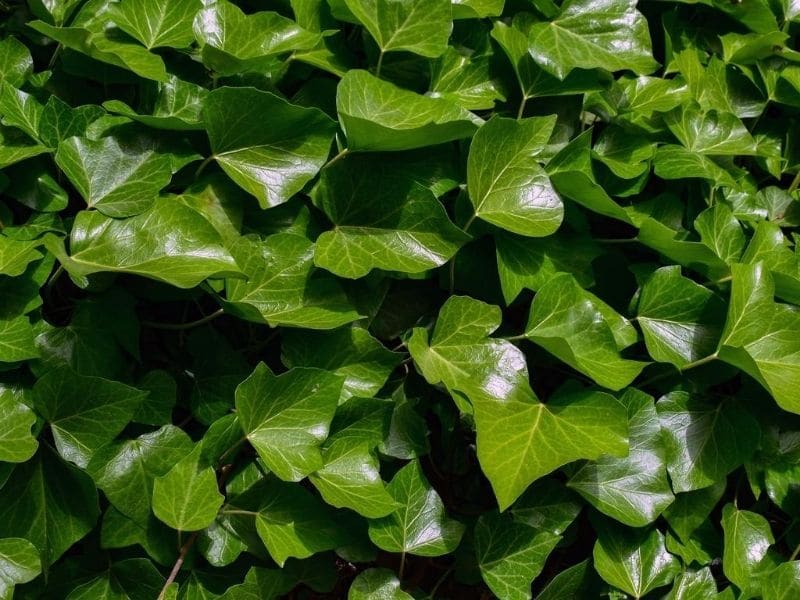
English Ivy doesn’t just make for a great houseplant because of its attractive trailing vines. It’s also a good moisture absorber.
It can live healthily in a wide range of conditions, but it truly shines in moisture-heavy environments like your bathroom. Ensure it’s given room to spread, whether horizontally or vertically. More coverage equals more moisture absorption, right?
Boston Fern: A Natural Humidifier
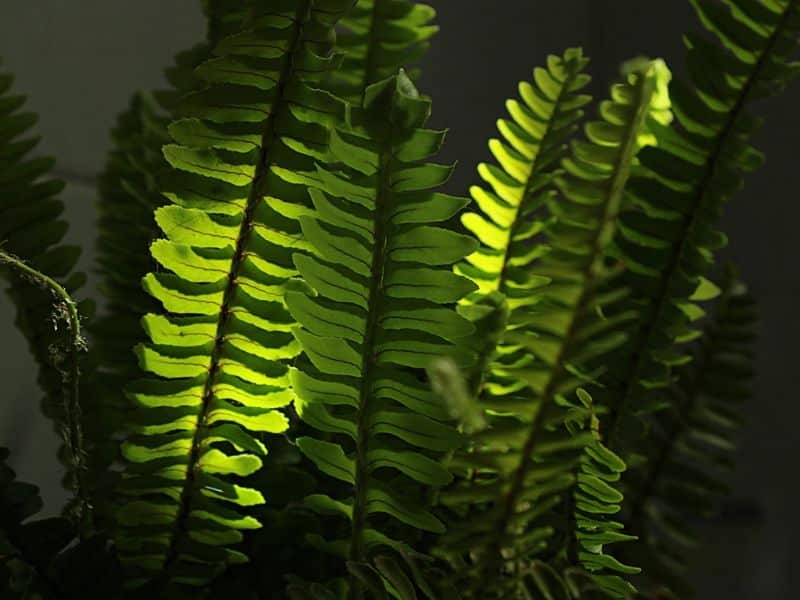
If we’re talking about moisture-loving houseplants, the Boston Fern is a name that pops up often. It’s pretty much a natural humidifier that thrives in a damp environment.
This explains why it earns its stripes in this list, especially when helping you keep your bathroom moisture under control. As an additional perk, its feathery, light green leaves make it a lovely addition to your bathroom decor.
Spider Plant: Low Maintenance Moisture Controller
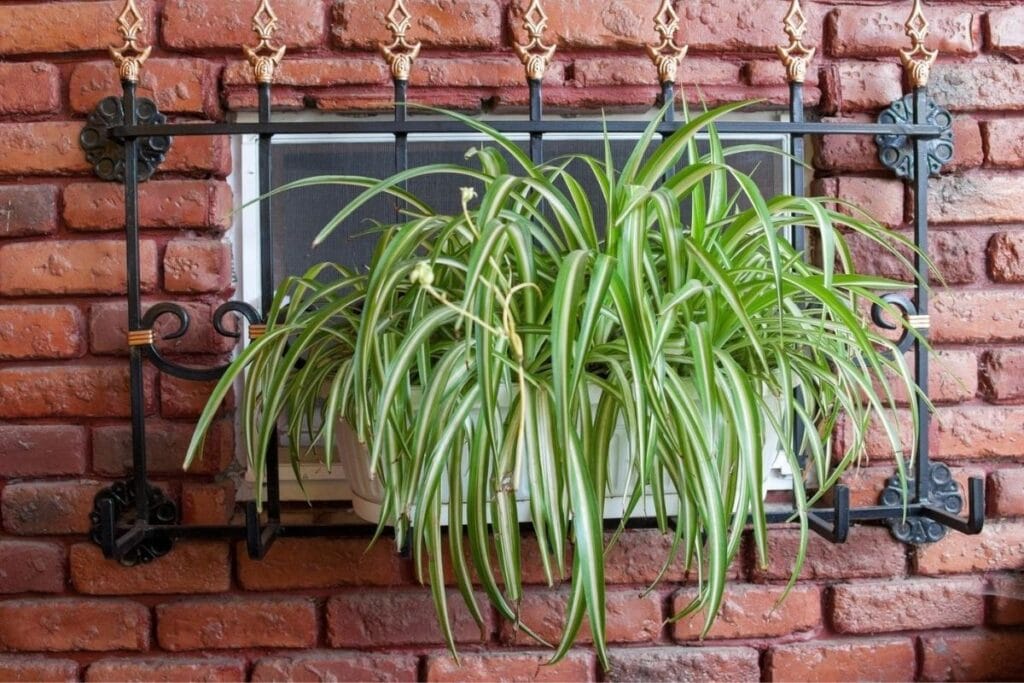
Last, but certainly not least we have the Spider Plant. Renowned for its low-maintenance nature, this plant is quite the moisture controller. It does well in both high and moderate humidity levels thanks to its hardy nature.
Plus, its long, spiky leaves add a pop of greenery to your bathroom, making it just as visually appealing as it is functional.
Benefits of Having Plants in Your Bathroom
Plants in bathrooms can provide a multitude of benefits. Let’s delve into a few more reasons for bringing plants into this often overlooked space of the house.
Air Purification
Bathroom plants aren’t just an aesthetic element, they’re also dedicated fresh air factories. Most air purifying plants, including those suggested for bathrooms, can filter common volatile organic compounds (VOCs) out of the air.
For example, the evergreen spider plant, is celebrated for its ability to cleanse the air of pollutants like formaldehyde and carbon monoxide, both commonly found in household products.
Aesthetic Enhancement
Beyond the functional benefits, bathroom plants can lift the visual appeal of your space. Lush greenery creates a sense of calmness and tranquility, transforming your bathroom into a personal oasis.
Picture this: a peace lily or Boston fern perched on your vanity. They not only thrive in the humid environment but also add a tropical touch that’s entirely refreshing.
Humidity and Moisture Control
You’ve already learned certain plants thrive in humid environments, what’s more, they actually assist in controlling humidity levels. Plants like English Ivy, are natural dehumidifiers, they absorb excess moisture from the air via their leaves.
So, next time you’re battling bathroom moisture, remember that a leafy buddy could be just the help you need. Now that’s a win-win for you and your plant pals.
Care Tips for Bathroom Plants
Now that you’re acquainted with the ideal plants for your bathroom, let’s delve into how to cater for these moisture-loving buddies. Keeping these plants healthy is simple and manageable with the right tips in mind.
Adequate Lighting Conditions
Bathroom plants by nature are typically tropical, they’re used to growing in shaded conditions under larger trees in the wild. This doesn’t mean they don’t need light, though.
Try to position your plants in areas where they can get plenty of indirect light, a frosted window is a perfect spot. In bathrooms with low natural light, it’s alright! There are many bathroom plants such as the peace lily and Boston fern that thrive in low light conditions.
Watering Requirements
If you’re thinking these moisture-absorbing plants must require heaps of water, you’re on the right track, but remember, overwatering is a common misstep. A simple trick is to check the top inch of the soil; if it’s dry, it’s sip time for your green friend.
However, since these plants are in your bathroom, they’ll also drink up the ambient moisture, this can reduce how often you need to water them.
Common Mistakes to Avoid
Now that you’re well-acquainted with the benefits of bathroom plants and how to care for them, let’s bring the hidden pitfalls into light. Understanding common mistakes in this sphere can be your game-changer, ensuring your bathroom flourishes with healthy greenery.
Overwatering the Plants
Even though your bathroom is generally a moist environment, overwatering your plants is a common blunder. Many indoor plants are susceptible to root rot when they receive more water than required.
It’s essential to feel the soil before watering. If it’s dry to touch, that’s your cue to water the plant. Remember, too much love can kill your plant!
Ignoring Pest Issues
In their cozy bathroom environment, plants can occasionally attract pests. Ignoring pest problems, unfortunately, is a common oversight that can seriously harm your plants.
Monitor your leafy friends closely for any signs of bugs or disease. At the first sign of trouble, take action, because it’s easier to deal with an infestation in its early stages.
Up next:

